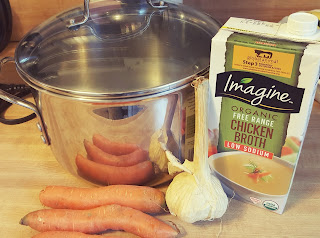- REFLECT on all of your specific eating habits, both bad and good; and, your common triggers for unhealthy eating.
- REPLACE your unhealthy eating habits with healthier ones.
- REINFORCE your new, healthier eating habits.
Here's how to get started:
Reflect upon your eating habits. Keep a list of your eating habits - We encourage our clients to keep a food diary including everything that they ate and drank. Then we review it weekly. This can reveal your habits. In addition, we ask that you rate how you were feeling, we can uncover what emotions are tied to your eating habits.- Highlight your habits - Next, try highlighting habits in your diary that may be leading you to overeat. Some habits that can lead to weight gain are:
- Eating too fast
- Always cleaning your plate
- Eating when not hungry
- Eating while standing up (may lead to eating mindlessly or too quickly)
- Always eating dessert
- Skipping meals (or maybe just breakfast)
- Identify unhealthy eating habits - Once you have highlighted your unhealthy habits try to identify what's causing them. Then choose a few you would like to improve. It's important to recognize when you are making positive changes. By recognizing your successes you will be encouraging yourself to continue making more changes.
- Create a list of "cues" - A review of your diary will point out where triggers are occurring and help you to be more aware. Make sure you note how you are feeling.
Common triggers for eating when not hungry are:
- Opening up the cabinet and seeing your favorite snack food.
- Sitting at home watching television.
- Before or after a stressful meeting or situation at work.
- Coming home after work and having no idea what's for dinner.
- Having someone offer you a dish they made "just for you!"
- Walking past a candy dish on the counter.
- Sitting in the break room beside the vending machine.
- Seeing a plate of doughnuts at the morning staff meeting.
- Swinging through your favorite drive-through every morning.
- Feeling bored or tired and thinking food might offer a pick-me-up.
Circle the "cues" on your list that you face on a daily or weekly basis. For now, focus on the ones you face more often.
- Ask yourself these questions for each "cue" you've circled:
- Is there anything I can do to avoid the cue or situation? This option works best for cues that involve yourself. For example, can your drop by a different coffee shop that does not carry your favorite muffin? Or, could you simply make coffee at home.
- For things I can't avoid, can I do something differently that would be healthier? Obviously, it's impossible to avoid all situations that can trigger unhealthy eating habits. We recommend that you look at all of your options. For example, say you are at a meeting at work that involves food. Is it possible to suggest healthier items? Or, could you plan ahead and eat a healthy snack?
Replace unhealthy habits with new, healthy ones. For example, in reflecting upon your eating habits, you may realize that you eat more when you are sitting in front of the television. So, why not try eating at your table with not distractions! This way you can really focus on what you are eating and enjoy your meal.
Here are more ideas to help you replace unhealthy habits:
- Eat more slowly. This will help you identify when you're full.
- Eat only when you're truly hungry instead of when you are tired, anxious, or feeling an emotion besides hunger. If you find yourself eating for emotional reasons try addressing them without food. For example, if you are upset try calling a friend or taking a walk.
- Plan meals ahead of time. This not only helps with shopping, but also helping you know what meals you will be making for the week.
Reinforce your new, healthy habits and be patient with yourself. Habits take time to develop. It doesn't happen overnight. When you do find yourself engaging in an unhealthy habit, stop as quickly as possible and ask yourself: Why do I do this? When did I start doing this? What changes do I need to make? Be careful not to berate yourself or think that one mistake "blows" a whole day's worth of healthy habits. You can do it! It just takes one day at a time!
Reference: Improving Your Eating Habits, https://www.cdc.gov/healthyweight/losing_weight/eating_habits.html
























